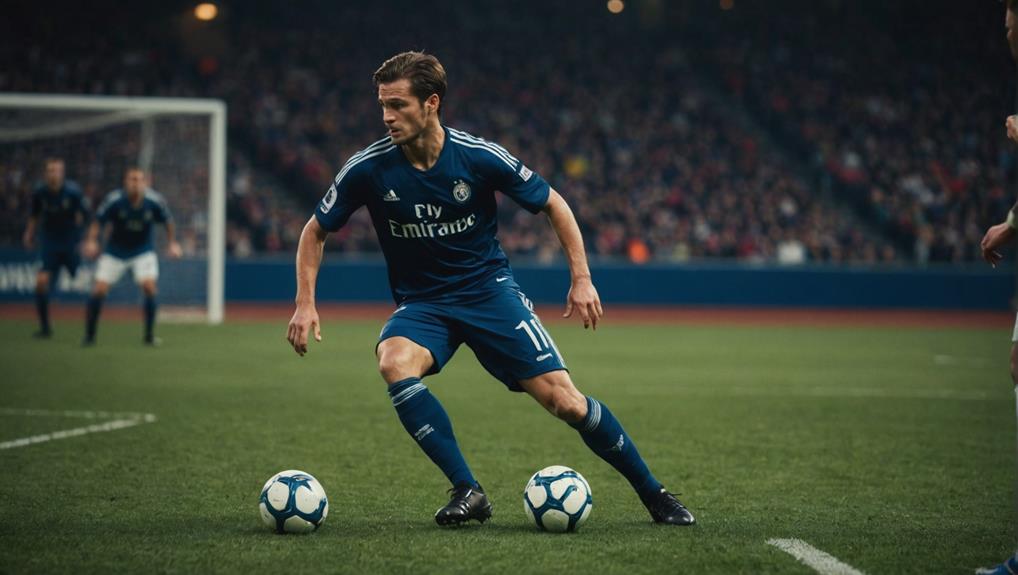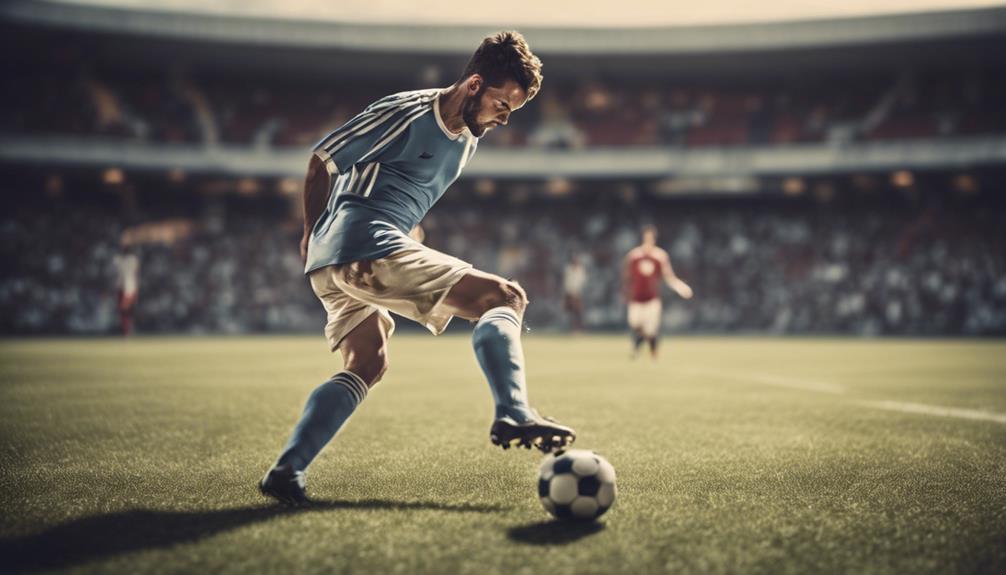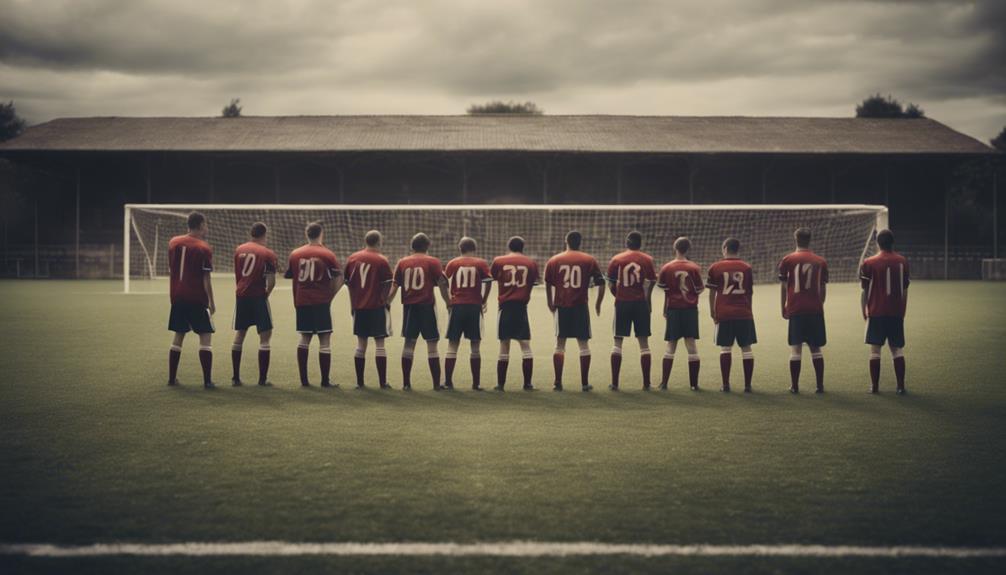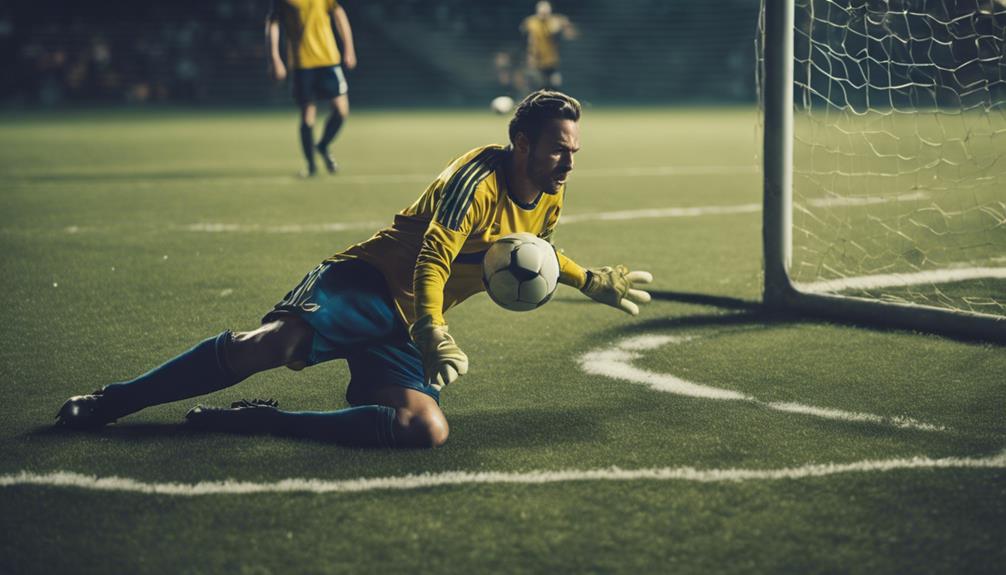
How to Defend in Soccer: Techniques and Strategies
August 7, 2024To excel at defending in soccer, adopt a defensive stance, predict opponents' moves, and utilize speed. Master slide tackling by focusing on technique and precise timing. When defending corners, use man-marking, maintain goal-side position, and coordinate with teammates. Execute offside traps with precision timing and disrupt opponents' plays. For free kicks, organize a defensive wall, anticipate shots, and communicate effectively. As a goalkeeper, be the last line of defense, track movements, and collaborate with the team. This overview offers a glimpse into the essential techniques and strategies for defending in soccer.
Approaching an Attacker
Approaching an attacker in soccer necessitates quick movement, a defensive stance, and strategic positioning to effectively disrupt their play. As you face the opponent, predicting their next move by observing their body language and positioning is crucial.
Utilize your speed and agility to apply pressure while maintaining discipline to avoid unnecessary fouls. When executing a slide tackle, run alongside the attacker, keeping your eyes on the ball and aiming to clear it cleanly. Concentrate on a swift recovery post-tackle to uphold defensive shape and readiness.
Maintain a defensive stance with your knees bent and arms out, ensuring you're prepared to react swiftly to the attacker's movements. By slowing down a few feet away and positioning yourself at a slight angle, you can cut off passing options effectively.
Defensive Stance
When defending in soccer, your stance is essential for maintaining balance and reacting swiftly to attackers. Keeping your knees bent and arms out allows you to be ready to defend effectively and deter opponents.
Body Positioning Importance
Maintaining a strong defensive stance in soccer is essential for effective play on the field. Body positioning plays a pivotal role in your defensive stance, ensuring agility and readiness.
By keeping your knees bent and arms out, you can react quickly to any changes in direction that attackers make. It's important to maintain a low center of gravity through your defensive stance, as this enables you to move swiftly and change direction with ease.
Proper body positioning not only helps you engage attackers effectively but also allows you to cover passing lanes and support your teammates on the field. With the right defensive stance, you'll be able to react quickly to the movements of the opposing team, making it easier to intercept the ball and thwart any offensive plays they try to execute.
Mastering your body positioning is key to becoming a formidable defender in soccer.
Stance for Quick Reaction
To react swiftly in soccer, adopt a defensive posture with your knees bent and arms extended. This defensive posture not only helps you maintain a low center of gravity for better balance and agility but also enables rapid reactions and sharp movements in response to your opponents' movements.
By staying in a stable position, you can intercept passes effectively and make tackles with precision. Good defensive positioning starts with a strong foundation, which the defensive posture provides. Being in this position keeps you ready to defend against your opponents' advances and swiftly respond to any changes in the game.
Slide Tackling

Executing a slide tackle in soccer involves timing your movement to win the ball from an opponent while sliding on the ground. Defenders often use slide tackling as a key defensive strategy to disrupt the opponent's possession and regain control of the ball. To execute a successful slide tackle, it's vital to focus on proper technique, precise timing, and quick decision-making. By mastering the art of slide tackling, defenders can effectively break up the opponent's attacks and shift the momentum in favor of their team.
During a slide tackle, keeping your eyes fixed on the ball is essential to make a clean challenge without fouling the opponent. The primary goal of a slide tackle is to cleanly win the ball, denying the opponent any chance of maintaining possession.
Defending Corner Kicks
When defending corner kicks, focus on key tactics like man-marking and effective zonal marking to secure your area.
Stay alert to your opponent's movements, ensuring you maintain a goal-side position for best defense.
The defensive wall is your shield, so position yourself wisely and communicate with your teammates to thwart scoring chances.
Corner Kick Defending Tactics
Defending corner kicks requires precise positioning and quick decision-making to thwart the attacking team's scoring attempts effectively. Strategic ball placement is key in corner kick defense, as it limits the attacking team's scoring opportunities.
Whether utilizing man-marking or zonal marking strategies, coordination among defenders is pivotal. Man-marking involves closely covering specific opponents to prevent headers or shots, while zonal marking assigns defenders to specific areas in the box to anticipate and clear incoming crosses.
A well-organized defensive setup is essential to track attacking players and prevent goals effectively. By showcasing defensive prowess during corner kick defense, teams can shift momentum in their favor and demonstrate their ability to protect their goal successfully.
Mastering these corner kick defending tactics can make a significant difference in a team's overall defensive performance and help them maintain a solid defensive stance throughout the game.
Man-Marking Strategies
For effective corner kick defense, closely marking specific opponents is vital to prevent scoring opportunities. Man-marking on corner kicks involves assigning defenders to stick close to particular opponents during set-piece situations. The goal is to disrupt the attacking plan of the opposition and minimize the chances of conceding from corner kicks. Tight marking requires constant communication among defenders to track the movements of their assigned players effectively.
By man-marking, defenders can neutralize key threats in the box and deny the opponents easy opportunities to score. It's important for defenders to stay focused, physically engage with their marked players, and be ready to react to any sudden changes in positioning. This strategy demands discipline and coordination among the defensive unit to ensure that the marked players are unable to find space or time to execute their scoring intentions.
Man-marking on corner kicks can greatly strengthen a team's defensive resolve and thwart the opponent's set-piece tactics.
Zonal Marking Importance
To enhance your team's defensive strategy on corner kicks, understanding the importance of zonal marking is vital. Zonal marking on defending corner kicks involves assigning players specific areas of the box to cover rather than marking individual opponents. This technique aims to prevent opponents from finding free spaces in the box and scoring from set-pieces. By implementing zonal marking, defenders can focus on their designated areas, improving defensive organization and reducing confusion.
Discipline is key in zonal marking as defenders must track runners, challenge for aerial balls, and clear the danger efficiently. Effective zonal marking also requires coordination among defenders, communication to make sure everyone is in position, and quick reactions to respond to any threats in the box. By staying disciplined, communicating effectively, and coordinating their movements, defenders can successfully implement zonal marking to strengthen their team's defense during corner kicks.
Offside Traps

Using a coordinated defensive maneuver known as offside traps, soccer teams aim to catch attacking players offside by strategically moving their defensive line up the field. The offside trap is an essential aspect of defensive tactics that requires precise timing and coordination among defenders.
By executing the offside trap effectively, teams can disrupt the opponent's attacking play, restrict space, and nullify goal-scoring opportunities. To successfully implement the offside trap, defenders must maintain a compact defensive line and move in unison to catch opponents offside.
This strategic approach not only helps in regaining possession but also puts pressure on the attacking team to make quick decisions under the threat of being caught offside. Overall, the offside trap is a valuable tool in a team's defensive arsenal, providing a proactive method to control the game and limit the opposition's scoring chances.
Free Kicks Defense
Employing a well-organized defensive wall is vital in effectively defending free kicks in soccer. When setting up the defensive wall, proper spacing and positioning are fundamental to block the path of the ball towards the goal.
Make sure to assign players to man-mark key opponents, preventing them from getting free headers or shots on goal. Anticipate the flight of the ball and be ready to react quickly to clear any danger that comes your way.
Goalkeepers play a pivotal role in organizing the defense during free kicks, ensuring everyone is in the right position and making crucial saves when needed. By working together, the team can increase their chances of successfully defending against free kicks and denying the opposition scoring opportunities.
Stay focused, communicate effectively, and coordinate your efforts to keep the opponent at bay during free kicks.
Defending as a Goalkeeper

When defending as a goalkeeper, your role as the last line of defense is important in stopping shots and organizing the defensive strategy. As the goalkeeper, effective communication with your defenders is essential to direct them, anticipate threats, and maintain a cohesive defensive unit.
Tracking the ball's movement and predicting opponents' actions are key skills for a goalkeeper in defending against incoming attacks. Quick decision-making is a must; deciding whether to come off your line to clear the ball or stay back to protect the goal can be game-changing.
Collaborating with defenders and knowing when to take calculated risks are crucial for effective goalkeeping in defense. By being proactive, making quick and precise decisions, and working closely with your team, you play a pivotal role in keeping the opposition at bay and ensuring your team's defensive solidity.
Conclusion
In soccer, defending requires a combination of skill, strategy, and teamwork. By mastering techniques like approaching attackers, maintaining a strong defensive stance, and executing slide tackles effectively, you can become a formidable defender on the field.
Remember to work together with your teammates, communicate effectively, and always stay focused on the game.
With dedication and practice, you can become a defensive powerhouse, shutting down opponents and protecting your goal with precision and determination.

